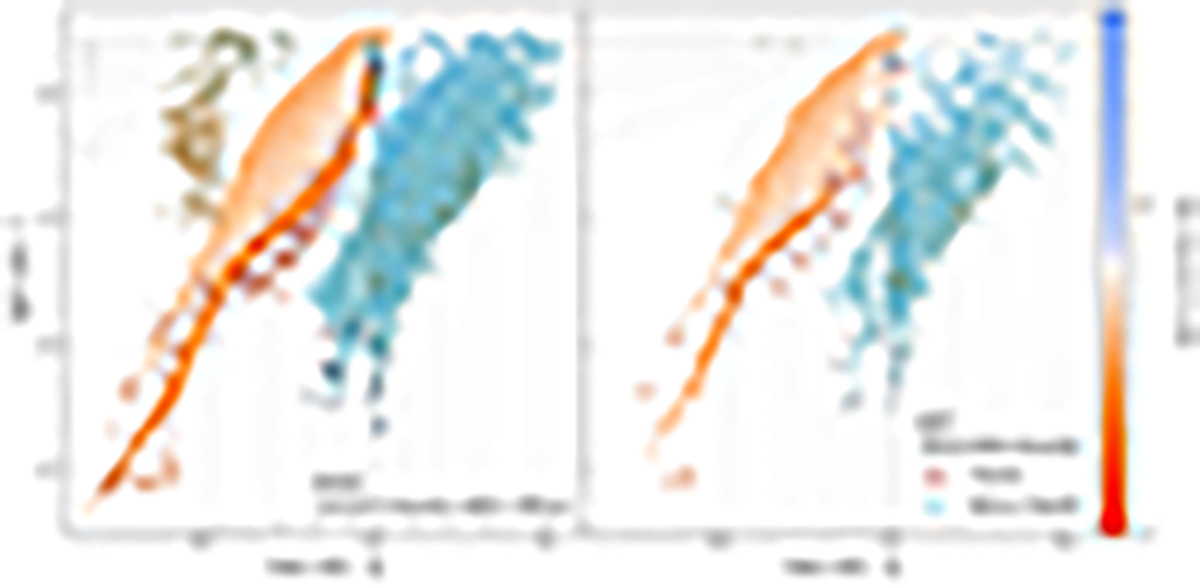Fig. 8.

Download original image
Mass and light ratios of a random subset of 30 000 (of 242 485) binaries from GUMS within 200 pc. The central colour of each point shows the type of the primary, and the outline shows the type of the secondary. MS stars are given a colour that approximately corresponds to their visual colour based on their effective temperature. Giants (MG < 4 and GBP − GRP > 0.9) are shown in dark red and WDs (MG − 3(GBP − GRP) < 9.5) in blue. The left panel shows all random binaries and the right panel only those that are unresolved and whose RUWE is greater than the threshold for their region of the sky. Because we chose the primary to be the brighter component (l < 1 always), the populations are effectively reflected through l = 1 and ![]() . Thus, the population of systems that contain WDs appears at both low and high q depending on the relative brightness of the other component. Lines of constant
. Thus, the population of systems that contain WDs appears at both low and high q depending on the relative brightness of the other component. Lines of constant ![]() are shown; they describe the relative offset of the centre of light from the CoM (with positive values corresponding to systems where the photocentre is closer to the secondary).
are shown; they describe the relative offset of the centre of light from the CoM (with positive values corresponding to systems where the photocentre is closer to the secondary).
Current usage metrics show cumulative count of Article Views (full-text article views including HTML views, PDF and ePub downloads, according to the available data) and Abstracts Views on Vision4Press platform.
Data correspond to usage on the plateform after 2015. The current usage metrics is available 48-96 hours after online publication and is updated daily on week days.
Initial download of the metrics may take a while.


